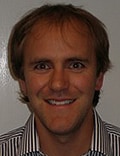Really? You mean you didn't know about all this earlier research on vagus nerve stimulation? How do we get our stoke hospital to implement this? What technique will force our hospitals to GET THERE?
vagus nerve (47 posts to July 2012)
VNS(Vagus nerve stimulation) May Improve Upper-Limb Rehabilitation After Stroke
Vagus nerve stimulation (VNS) plus rehabilitation provided greater functional improvements compared with sham stimulation plus rehabilitation for patients with moderate to severe arm impairment after ischemic stroke, results of a phase 3 randomized trial show.

Dr Jesse Dawson
"VNS combined with rehabilitation is an acceptably safe and effective intervention for improving upper-limb impairment and function in people with moderate to severe arm weakness at least 9 months after ischemic stroke," said Jesse Dawson, MD, MBChB, professor of stroke medicine at the University of Glasgow, Glasgow, United Kingdom, during a presentation at the European Stroke Organisation–World Stroke Organisation (ESO-WSO) Conference 2020.
Approximately half of people with stroke experience severe arm weakness after the event, which is a predictor of poor quality of life. VNS appears to promote the release of norepinephrine and acetylcholine onto the cerebral cortex. Pairing VNS and rehabilitation increases the recruitment of neurons and has shown promise in increasing the benefits of rehabilitation among patients with stroke.
Dawson and colleagues hypothesized that intense rehabilitation plus VNS would promote increased plasticity for patients with stroke and upper-limb deficits. To test their hypothesis, they conducted a pivotal phase 3 trial that compared VNS and sham stimulation as supplements to rehabilitation.
The investigators enrolled patients who experienced long-term arm weakness after ischemic stroke. Eligible patients were between the ages of 22 and 80 years. They had had an ischemic stroke 9 months to 10 years before enrollment and had undergone a rehabilitation program. The cutoff for the date of stroke onset was "based on our previous studies where time from stroke did not appear to influence effect, and we did not want to include people too early after stroke," Dawson told Medscape Medical News. Patients with severe spasticity and those with a history of hemorrhagic stroke were excluded.
All participants underwent VNS implantation. The investigators randomly assigned patients to VNS plus intense rehabilitation or sham stimulation plus intense rehabilitation. Rehabilitation consisted of 6 weeks of in-clinic sessions (ie, three 2-hour sessions per week), followed by a home-based program for 90 days. Patients were assessed at 1, 30, and 90 days after the completion of in-clinic therapy.
The study's primary outcome measure was change in score on the Fugl-Meyer Assessment–Upper Extremity (FMA-UE) from baseline to day 1 after completion of therapy. Secondary endpoints included the number of responders (defined as those with an improvement of 6 or more points on the FMA-UE) after day 90, the change in score on the Wolf Motor Function Test (WMFT) from baseline to after day 90, and change in FMA-UE score from baseline to after day 90.
Successful Blinding
Dawson and colleagues implanted a VNS system in 108 patients and randomly assigned them to a study arm. Overall, 107 participants completed the intervention, and 106 underwent assessment of the primary outcome. Participants' responses to a questionnaire indicated that they had remained successfully blinded to their treatment assignment.
No comments:
Post a Comment